1.
Introduction
In this paper we present some regularity criteria for weak solutions of the following magneto-micropolar fluid system in three space dimensions:
where u(x,t)=(u1(x,t),u2(x,t),u3(x,t))∈R3 denotes the incompressible velocity field, w(x,t)=(w1(x,t),w2(x,t), w3(x,t))∈R3 denotes the micro-rotational velocity, b(x,t) =(b1(x,t),b2(x,t), b3(x,t)) ∈R3 the divergence free magnetic field and p(x,t)∈R the hydrostatic pressure. As usual, x∈R3 denotes the space variable and 0≤t<T the time variable. The positive constants μ,χ,ν,κ, and γ are associated with specific properties of the fluid; precisely, μ is the kinematic viscosity, χ is the vortex viscosity, κ and γ are spin viscosities and, lastly, ν−1 is the magnetic Reynolds number. The initial data for the velocity and magnetic fields, given by u0 and b0 in (1), are divergence free, i.e., ∇⋅u0=∇⋅b0=0.
Let us list some recent papers which discuss regularity of weak solutions of the magneto-micropolar equations (1) and systems that are particular cases of these equations as, for example, the classical Navier-Stokes equations.
In 2010, Y. Baoquan [18] established the following regularity criteria: a solution (u,w,b)(t) of (1) can be extended smoothly beyond t=T if
or
provided that the initial data (u0,w0,b0) belong to H1(R3) and ∇⋅u0=∇⋅b0=0. Here (u,w,b)∈C([0,T);H1(R3))∩C((0,T);H2(R3)) is assumed. Notice that Y. Baoquan [18] used only the velocity field or its gradient in the regularity criteria described above.
In 2013, Y. Wang [14] showed that a weak solution (u,w,b)(t) of (1), defined on the interval [0,T), can be extended smoothly beyond t=T if one assumes
provided that (u0,w0,b0)∈H1(R3) and ∇⋅u0=∇⋅b0=0. Let us point out that Y. Wang [14] established the regularity criterion given above by considering only one component of the gradient of the velocity field (see (2)). The paper [14] deals with an extension of a regularity criterion obtained for weak solutions of the magneto-hydrodynamic equations (see [2]). This latter system is the special case of(1) obtained for w=0 and χ=0. Further results related to the current paper are in [2,21].
The papers [14] and [18] (see also [3,8,12,13,15,17,19,20,22,23,24,28,29]), raised our interest to obtain regularity criteria for weak solutions of the magneto-micropolar system (1), which involve only one component of the velocity field u.
Note that the magneto-micropolar system (1) reduces to the classical Navier-Stokes equations for the velocity field u and the pressure p if one assumes that w=b=0 and χ=0. Regularity criteria for weak solutions of Navier-Stokes equations, involving only one component of the velocity field, have been published recently. We want to comment on two results.
First, Z. Zhang and X. Yang [22] present a regularity criterion for the Navier-Stokes equations involving the gradient of one component of the velocity field. Precisely, if u(t) is a weak solution of the Navier-Stokes equations in (0,T) and
then u is C∞ in R3×(0,T) and the solution can be extended as a C∞ function beyond T. Here u0∈L2(R3) with ∇⋅u0=0 is assumed. In the current paper we prove that the criterion (3) can be extended from the Navier-Stokes equations to the magneto-micropolar system (1) under appropriate conditions on the other fields w and b. See Theorem 1.1 below.
The second paper we cite is [23]. Z. Zhang and X. Yang [23] deal with one component of the gradient of one component of the velocity field. More precisely, regularity of a weak solution u(t) of the Navier-Stokes equations is obtained under the assumption
Theorem 1.2 below establishes an extension of criterion (4) from the Navier-Stokes equations to the magneto-micropolar system (1).
Further regularity results for weak solutions of the Navier-Stokes equations are established in [1,4,5,6,7,10,25,26].
The main results of the current paper are:
Theorem 1.1. Let (u0,w0,b0)∈L2(R3) with ∇⋅u0,∇⋅b0=0. Let T>0 and let
denote a weak solution of the magneto-micropolar equations (1) in (0,T) satisfying the initial condition (u,w,b)(0)=(u0,w0,b0). If
then (u,w,b) is C∞ in R3×(0,T) and the solution can be extended as a C∞ function beyond T.
Theorem 1.2. Let (u0,w0,b0)∈L2(R3) with ∇⋅u0,∇⋅b0=0. Let T>0 and let
denote a weak solution of the magneto-micropolar equations (1) in (0,T) satisfying the initial condition (u,w,b)(0)=(u0,w0,b0). If
then (u,w,b) is C∞ in R3×(0,T) and the solution can be extended as a C∞ function beyond T.
An outline of the paper follows: There are two sections after the Introduction. In Section 2, we list definitions and notations used throughout the paper and recall results that play an important role in our proofs of the main results. Section 3 presents the proofs of Theorems 1.1 and 1.2.
2.
Preliminaries
We introduce notations and definitions used in the paper.
● Boldface letters denote vector fields; for example,
● The Euclidean norm of any vector a=(a1,...,an)∈Rn is denoted and given by |a|=√∑ni=1a2i.
● The notation Lα is used for the standard Lebesgue space equipped with the norm ‖⋅‖α, where 1≤α≤∞; more specifically,
and
where a:R3→Rn (n∈N) is a mensurable function. We define the L2-inner product of two vector functions by
where c⋅d:=∑ni=1cidi for c=(c1,...,cn),d=(d1,...,dn)∈Rn; and a,b:R3→Rn (n∈N) are mensurable functions.
● Let ∇a=(∇a1,...,∇an) denote the gradient of a=(a1,...,an)∈Rn, where ∇aj=(∂1aj,∂2aj,∂3aj), with ∂i=∂/∂xi for all i=1,2,3 and j=1,...,n.
● The horizontal gradient is denoted by ∇ha=(∇ha1,...,∇han), where a=(a1,...,an)∈Rn and ∇haj=(∂1aj,∂2aj), with j=1,...,n.
● Here a⋅∇:=∑3i=1ai∂i, where a=(a1,a2,a3)∈R3.
● ∇×a denotes the curl of the vector field a=(a1,a2,a3)∈R3.
● Denote ∇⋅a=∑3i=1∂iai, where a=(a1,a2,a3)∈R3.
● Δ represents the standard Laplacian operator.
● The horizontal Laplacian is denoted by Δha=(Δha1,...,Δhan), where a=(a1,...,an)∈Rn and Δhaj=∑2i=1∂2iaj, with j=1,...,n.
● Let (X,‖⋅‖) be a Banach space and assume that 1≤β≤∞, c,d∈R,c<d. We denote by Lβ(c,d;X) the space of all measurable functions f:(c,d)→X with ‖f(⋅)‖∈Lβ(c,d) endowed with the norm ‖f‖Lβ(c,d;X):=(∫dc‖f(t)‖βdt)1β, where β<∞, and also ‖f‖L∞(c,d;X)=ess supc<t<d{‖f(t)‖}.
● We define a weak solution of (1) as follows: Let T>0 and (u0,w0,b0)∈L2(R3), with ∇⋅u0=∇⋅b0=0. A mensurable function (u,w,b)(t) is called a weak solution for (1) on [0,T) if the following conditions hold
1. (u,w,b)(t)∈L∞(0,T;L2(R3))∩L2(0,T;H1(R3));
2. the system (1) is satisfied in the sense of distributions;
3. the energy inequality holds, i.e.,
for all 0≤t<T.
● For brevity, dependencies on the variables x and t are often suppressed in our notation. For example, the function t→‖u(⋅,t)‖2 may also be written as ‖u(t)‖2 or ‖u‖2. Furthermore, as usual, the value of constants may change line by line in the paper.
Now, we enunciate the lemmas that will be applied in the proofs of our main results. The first one is proved in [16].
Lemma 2.1 (see [16]). Let i,j,k be a permutation of 1,2,3. Assume that
Then,
The second one was established in [23].
Lemma 2.2 (see [23]). Let f∈L6(R3) and g∈L2(R3) with ∂3f∈L2(R3) and ∇hg∈L2(R3). Then,
The third one was written in [2].
Lemma 2.3 (see [2]). Assume that θ,λ,ϑ∈R satisfy
Consider that f∈H1(R3),∂1f,∂2f∈Lλ(R3) and ∂3f∈Lθ(R3). Then, there exists a positive constant C such that
In particular, if λ=2 and f∈H1(R3), ∂3f∈Lθ(R3) (with 1≤θ<∞), then there is a positive constant C such that
3.
Proof of the main results
In this section we prove Theorems 1.1 and 1.2. In both results, it is necessary to consider ϵ∈(0,T) arbitrary in order to obtain δ∈(0,ϵ) such that (∇u,∇w,∇b)(δ)∈L2(R3). It is known that there is a unique strong solution (u′,w′,b′)∈C([δ,T∗);H1(R3))∩L2(δ,T∗;H2(R3)) for the system (1) (see [9,11] and references therein) that satisfies (u′,w′,b′)(δ)=(u,w,b)(δ), where t=T∗ is the maximum time of existence for this solution, and (u′,w′,b′)∈C∞(R3×(0,T∗)) (since ϵ>0 is arbitrary). Therefore, if T<T∗, one concludes that (u,w,b)(t) is regular in R3×(0,T). On the other hand, assuming T∗≤T, we will prove below that ‖(∇u,∇w,∇b)(t)‖2 is uniformly bounded for t∈[δ,T∗) (in Theorem 1.2) and bounded as t↗T∗ (in Theorem 1.1). However, this is not possible. In fact, this boundedness would imply that (u′,w′,b′)(t) could be extended beyond t=T∗, which contradicts the definition of T∗.
3.1. Proof of Theorem 1.1
First, notice that by applying the product (⋅,Δhu)2 to the first equation of the magneto-micropolar system (1) and using the fact that ∇⋅u=0, one gets
Similarly, from the second and third equations in (1), we obtain
and also
By adding the results (10), (11) and (12) one infers
Let us examine the terms on the right hand side of the above equality. We have
Similarly, we get
where we have used that b is divergence free. Hence,
Furthermore,
On the other hand, by analysing the last term above it is easy to prove that it is actually null. In fact, since ∇⋅u=0, one has
Therefore,
Similarly, we obtain
Also notice that, by applying Cauchy-Schwarz's inequality, one has
By [22], the following estimate holds:
Consequently, from (13), we infer
By applying Lemma 2.1, one obtains
By using Young's inequality, it follows that
where α=min{μ,ν,γ}. Now, by integrating over [T∗−τ,t] the inequality above (τ will be chosen a posteriori), we obtain
In order to estimate the term ‖(∇u,∇w,∇b)(t)‖2 for all t∈[T∗−τ,T∗), we define
and
where T∗−τ≤t<T∗. First of all, let us establish a relationship between I and J. By (15), one has
where we have applied Young's inequality, (6) and (9). By using Young's inequality again, we get
or equivalently,
The inequality (18) is useful to prove that ‖(∇u,∇w,∇b)(t)‖2 is bounded in the interval [T∗−τ,T∗). In order to establish this last statement, we start noting that the system (1) lets us conclude the following:
and also
where we used the fact that ∇⋅u=0. Hence, by adding the three equalities above, one obtains
Let us examine all the terms on the right hand side of the equality above. We have
Here
Similarly,
By using that u is divergence free, one also has
Therefore, using the above estimates, the equality (20) yields
Following the same process, we conclude that
It is important to point out that the technique applied to (u⋅∇w,Δw)2 may not be useful when we consider the terms −(b⋅∇b,Δu)2 and −(b⋅∇u,Δb)2 (such expressions were obtained in (19)). However, we can argue as follows.
Consequently,
By using ∇⋅b=0, we have
Let us estimate each term Ji(t) for i=1,2,3. Hence,
Similarly, one obtains
and, by applying ∇⋅b=0, we have
Replacing, in (21), the estimates obtained for Ji(t), i=1,2,3, we get
Furthermore, notice that
where we have applied Cauchy-Schwarz's inequality. At last, Y. Zhou and M. Pokorný [29] proved that
Therefore, (19) reads
By using Lemma 2.1, one gets
where α=min{μ,γ,ν}. Now, by integrating over [T∗−τ,s], s≤t, the inequality above yields
where we applied the definition of I(t) given in (16). By Hölder's inequality, we have
for all s≤t. In the inequality above the definitions of I(t) and J(t) were applied (see (16) and (17)). It follows, by using (17), that
By using Young's inequality, we infer
Consequently, by applying (18), we obtain
From the energy inequality (9), one concludes that there exists 0<τ≪1 such that
Now, we can obtain the desired estimate for ‖(∇u,∇w,∇b)(t)‖ in [T∗−τ,T∗). In fact, by replacing the bound above in (24), we get
The definition (17) establishes the proof of Theorem 1.1.
3.2. Proof of Theorem 1.2
In order to prove Theorem 1.2 let us examine all the terms on the right hand side of (13) in an alternative way. We have
since ∇⋅u=0. By arguing in the same way, one gets
Notice that
and also
The reader might check that (14) assures the following estimate:
At last, Y. Zhou and M. Pokorný [29] proved that
By replacing all these last results obtained above in (13) and by using Young's inequality, one has
where α=min{μ,γ,ν}. Hence,
By Lemmas 2.2 and 2.3, and also by (8), we obtain
By Young's inequality, one concludes
By applying Gronwall's inequality, we get
for all t∈[δ,T∗). By energy inequality (9), we can guarantee the following estimate:
In order to prove that the term ‖(∇u,∇w,∇b)(t)‖2 is bounded in [δ,T∗), we recall that (23) and Hölder's inequality imply
where α=min{μ,γ,ν}. By using (25) and Gagliardo-Nirenberg's inequality, one has
for all t∈[δ,T∗). By Young's inequality, we infer
By Gronwall's inequality,
This completes the proof of Theorem 1.2.
Acknowledgments
The authors would like to thank reviewers for their precious suggestions.










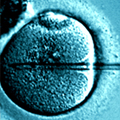
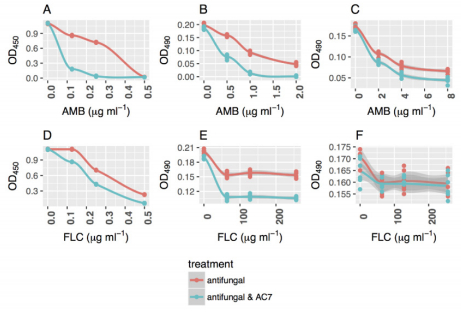
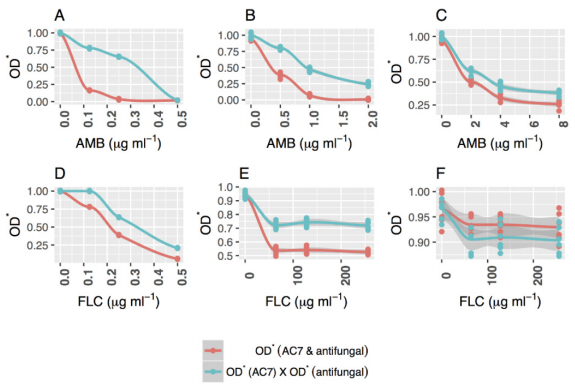
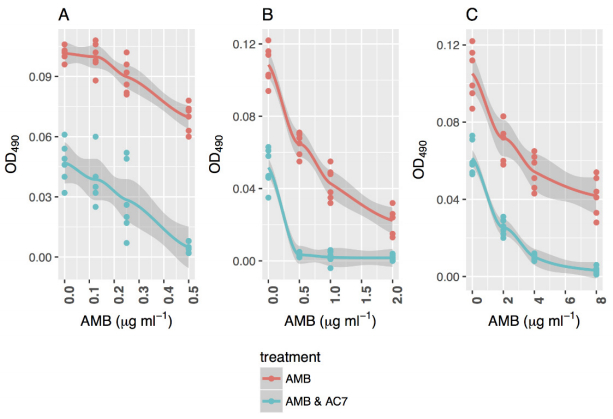
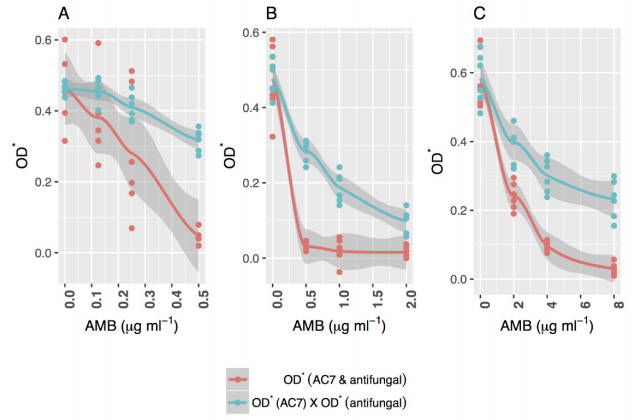


 DownLoad:
DownLoad: